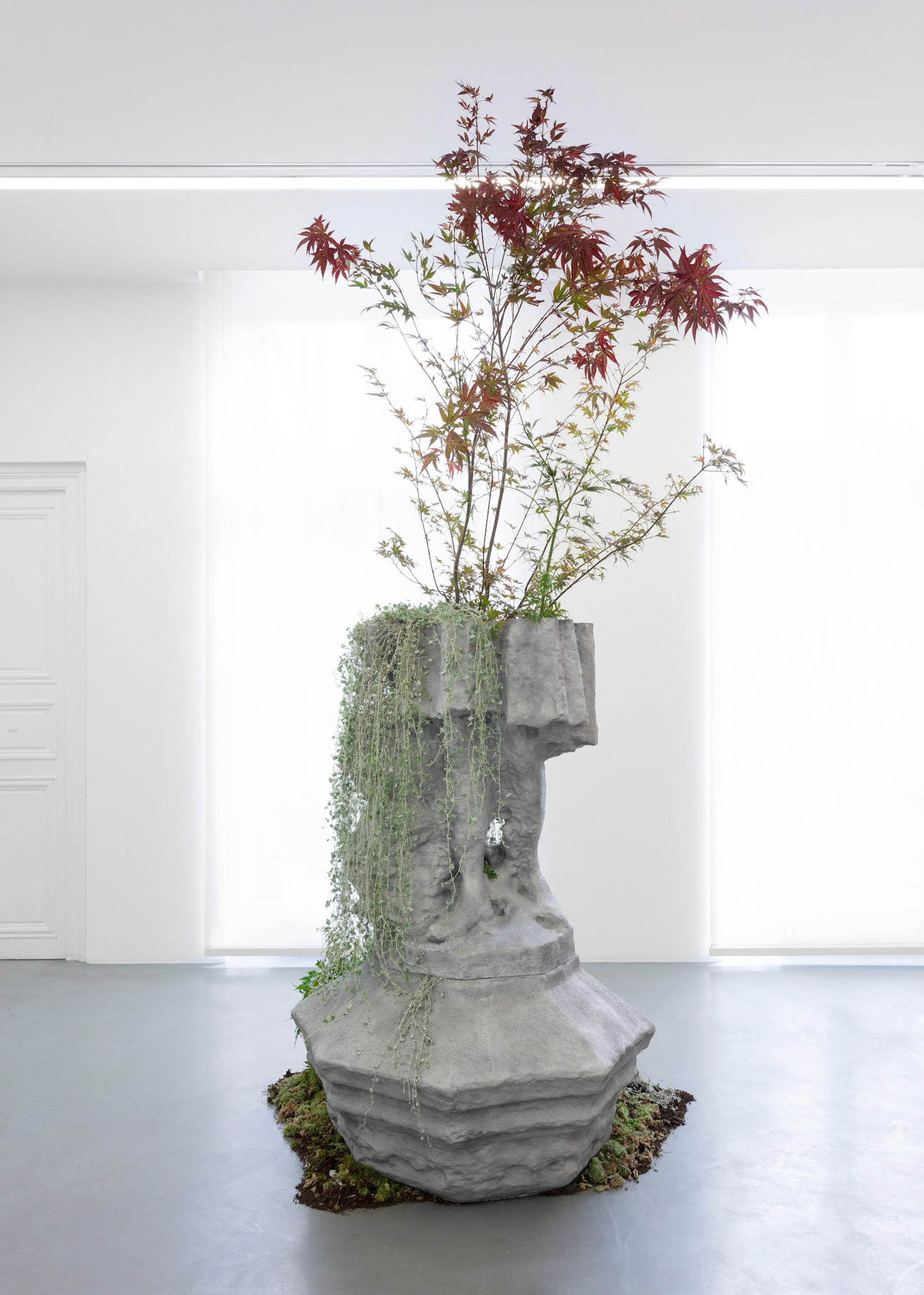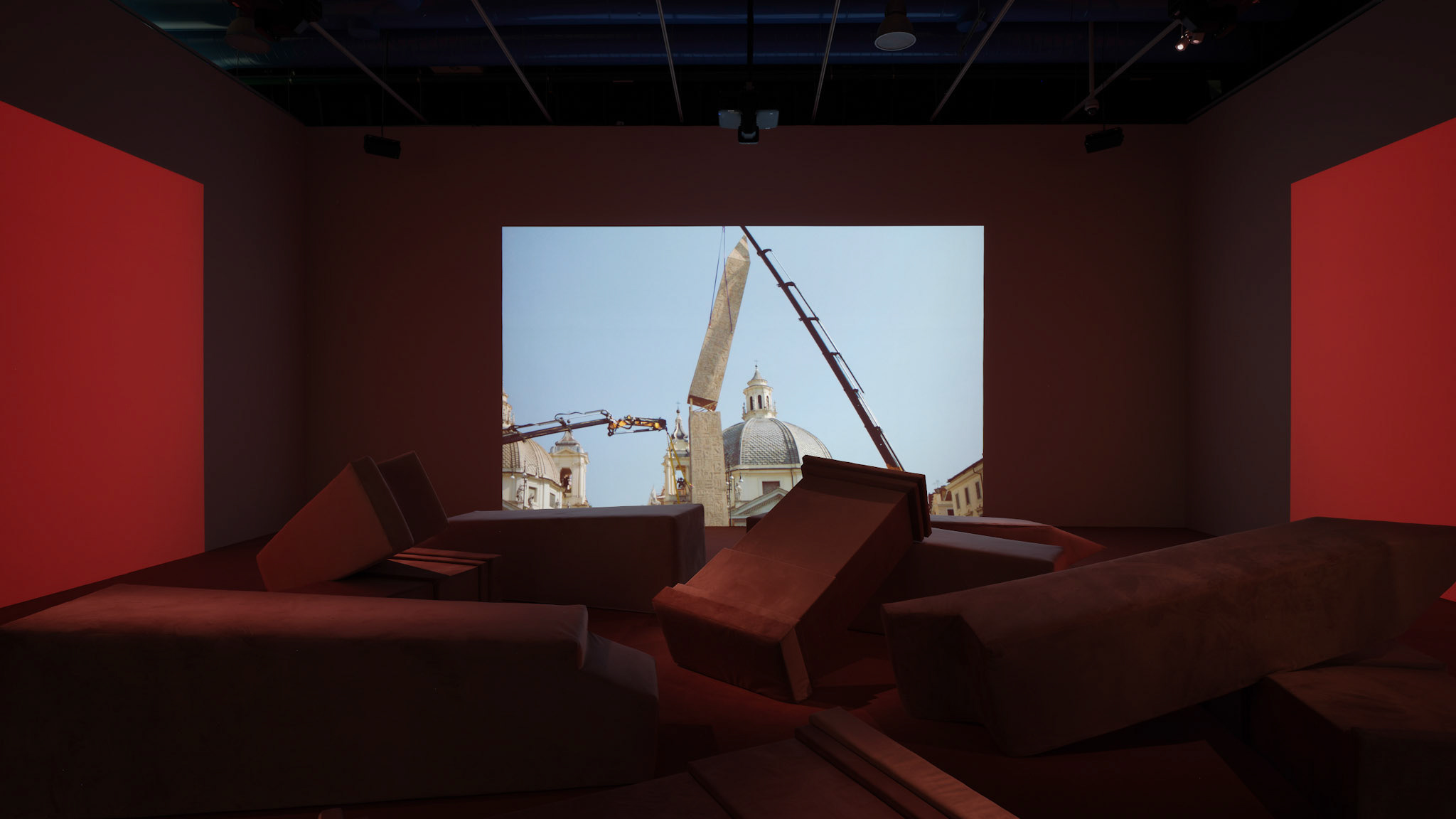Iván Argote is a sensitive artist. Constantly listening to the world around him, it is with tenderness that he studies the inner murmurings of men and the societies that they have built for themselves, often through illusions. Fragile foundations, an earth constantly trembling, thin as the layer of tar on a road laid bare by the umpteenth construction site in the city of Paris, on which, however, the ego of the powerful has erected empires and monuments. The heroic figures of the national narrative and the monuments dedicated to them are precisely subjects towards which the artist directed his critical gaze for the past several years.
Through a series of interventions in the public space, Iván Argote plays with the collective perception and tests the particular relationship we have with history and its artifacts. By simulating the removal of a statue in honor of Marshal Joseph Galliéni in Paris (Au Revoir Joseph Gallieni, 2021), the relocation of a sculpture dedicated to Christopher Columbus in Madrid (Paseo, 2022), and finally a Levitation of the Flaminio obelisk in the Piazza del Popolo in Rome, a summer 2022 performance as part of his residency at the Villa Medici, the artist reveals our attachment to the fictional narratives that constitute the history of nations. Like children unable to symbolically cut the umbilical cord, we want to continue to believe in our heroes, in their discoveries and their virtuous triumphs, which are as factual as Hans Christian Andersen’s fairytales.
Iván Argote is not a teacher, however. Like an experienced director of our psychological spaces, he is happy to redirect the light, to guide the gaze, to shine a spotlight where sometimes, by looking, the eye has stopped seeing. The guides he summons to enlighten us, for example on the several thousand year old history of Rome and the obelisks that punctuate its landscape, are not without humor: they are pigeons, for example, in the video Post Human.
Produced in a studio decorated with sets painted by the artist, sets that will themselves become works in their own right, Post Human traces the origins of the obelisk as an architectural form, and its instrumentalization as a symbol and public demonstration of power. The irony of the pigeons as guides, as numerous as the tourists who flock to the same places of pilgrimage that these famous cities and squares have become, is not unrelated to that of the contemplation of these great architectural gestures that have become tourist trinkets, sold on the street and carried home in a pocket. Reverence and popularization. Fragments of monuments, in the form of an installation of soft sculptures made by the artist, amplify the idea of mobility and immutability of sculptures and monuments in the public space.
Alongside the three films and the installation presented by the artist at the Centre Pompidou as part of his nomination for the Marcel Duchamp Prize, Iván Argote presents a new set of paintings and sculptures at Perrotin. In a game of self-reference where even accidents can seem premeditated, these two exhibitions and the places, films, paintings, sculptures and installations they present feed back into each other, one prefiguring the contours of the other in an endless spiral.
That the exhibition is entitled Premonitions is not insignificant. The Fallen series of paintings sees the artist returning to this medium, after several years exploring different materials such as concrete. Fragments of obelisks, empty pedestals and amputated monuments stand out in gradations of pastel tones: grayish, yellow or evoking the radical tenderness of millennial pink, like a prophetic dream of the end of a patriarchal and ecologically suicidal society. Collapsed monuments become fountains, sources of overflowing life, and luxuriant branches cut across the concrete, indicating nature regaining its rights. As is often the case with Iván Argote, nothing is final. The end of monuments seems to go hand in hand with the end of humanity, and pink is, unfortunately, a color that technically does not exist: an amalgam of colors close to each other, constituted by our imagination. Are we collectively capable of true self- criticism?
Olivia Anani


fine art documentation for Perrotinphotographed and edited by Claire Dorn

fine art documentation for Perrotinphotographed and edited by Claire Dorn

fine art documentation for Perrotinphotographed and edited by Claire Dorn

fine art documentation for Perrotinphotographed and edited by Claire Dorn

fine art documentation for Perrotinphotographed and edited by Claire Dorn

fine art documentation for Perrotinphotographed and edited by Claire Dorn

fine art documentation for Perrotinphotographed and edited by Claire Dorn

fine art documentation for Perrotinphotographed and edited by Claire Dorn

fine art documentation for Perrotinphotographed and edited by Claire Dorn

fine art documentation for Perrotinphotographed and edited by Claire Dorn

fine art documentation for Perrotinphotographed and edited by Claire Dorn

fine art documentation for Perrotinphotographed and edited by Claire Dorn

fine art documentation for Perrotinphotographed and edited by Claire Dorn

fine art documentation for Perrotinphotographed and edited by Claire Dorn

fine art documentation for Perrotinphotographed and edited by Claire Dorn

fine art documentation for Perrotinphotographed and edited by Claire Dorn

fine art documentation for Perrotinphotographed and edited by Claire Dorn

fine art documentation for Perrotinphotographed and edited by Claire Dorn

fine art documentation for Perrotinphotographed and edited by Claire Dorn

fine art documentation for Perrotinphotographed and edited by Claire Dorn

fine art documentation for Perrotinphotographed and edited by Claire Dorn

fine art documentation for Perrotinphotographed and edited by Claire Dorn











